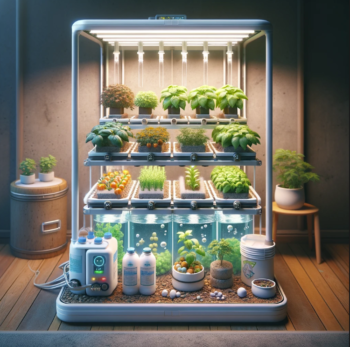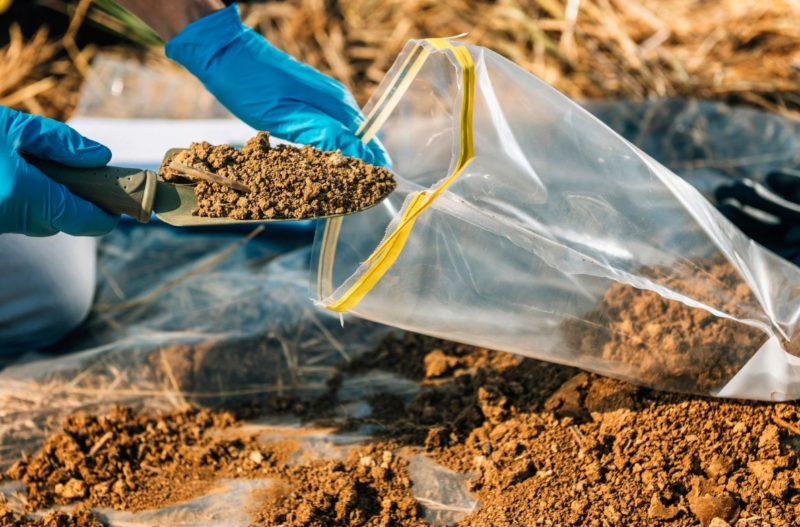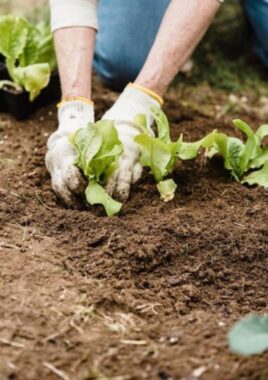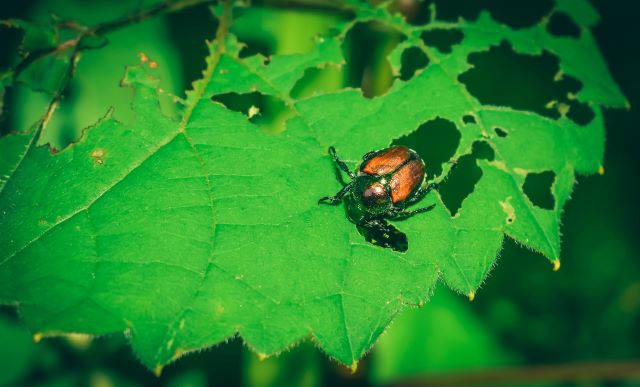At its core, hydroponics revolves around nurturing plants in a water-based, nutrient-rich solution, bypassing the conventional use of soil. This approach fundamentally alters the relationship between plants and their growth environment, offering several advantages and considerations in plant cultivation.
How Hydroponics Operates
In hydroponic systems, plants are supported in various growth mediums, such as rock wool, clay pellets, or peat moss, which provide physical support. However, the primary focus lies on the nutrient solution, a meticulously balanced mixture of water and essential minerals. This solution is delivered directly to the plant roots, ensuring they receive the necessary nutrients for growth.
In traditional soil-based cultivation, plant roots must search through the soil for nutrients. Hydroponics simplifies this process, allowing for more efficient nutrient uptake. This enables plants to direct their energy towards upward growth and the production of leaves and fruits, rather than expanding their root systems downward. As a result, hydroponically grown plants often exhibit faster growth rates and frequently yield more.
Comparison with Soil-Based Cultivation
The direct delivery of nutrients in hydroponics provides precise control over the plant’s nutritional environment. This level of precision is challenging to achieve in soil, given the variability of soil types and the complexity of altering its nutrient composition.
Furthermore, hydroponic systems can be established nearly anywhere, including indoor spaces, rooftops, and urban environments where soil-based agriculture is impractical. This adaptability is a significant advantage, particularly in cities or regions with limited arable land.
Water usage is another differentiating factor. Hydroponic systems recirculate water, significantly reducing consumption compared to soil-based agriculture, where a significant portion of water is lost to the ground.
Understanding these principles is fundamental to appreciating the full potential of hydroponics. It represents not merely an alternative cultivation method but a complete rethinking of how we can grow plants efficiently and sustainably.
- Definition and brief history
- Overview of its significance in modern agriculture
- Principles of Hydroponics
- Explanation of how hydroponics works
- Comparison with traditional soil-based cultivation
- Types of Hydroponic Systems
- Detailed description of different systems (e.g., Wick, Deep Water Culture, Nutrient Film Technique, Ebb and Flow, Aeroponics)
- Pros and cons of each system
- Benefits of Hydroponics
- Water efficiency
- Higher yield and faster growth
- Reduced pesticide use and disease
- Challenges and Considerations
- Initial setup cost
- Technical knowledge and management
- Potential issues (e.g., power failures, waterborne diseases)
- Hydroponics in Urban Environments
- Application in urban and small spaces
- Role in urban sustainability and food security
- The Future of Hydroponics
- Technological advancements (AI, IoT)
- Integration with other sustainable practices (e.g., aquaponics)
Introduction to Hydroponics
Hydroponics, a groundbreaking agricultural technique, marks a significant leap in the way we cultivate plants. This innovative method involves growing plants without soil, instead using a nutrient-rich water solution. This approach to cultivation has its roots in ancient practices, but it has gained tremendous momentum in recent years due to its sustainability and efficiency.
The concept of hydroponics is not new; historical records suggest its use in the Hanging Gardens of Babylon and the Floating Gardens of the Aztecs. However, it wasn’t until the 20th century that hydroponics was scientifically evaluated and utilized for commercial agriculture. Today, it’s seen as a key solution to modern challenges like urban food production and efficient use of water resources in farming.
Hydroponics is particularly significant in today’s context, as it offers an alternative to traditional farming, which often requires ample space and fertile land – resources that are becoming increasingly scarce. By eliminating the need for soil and significantly reducing water usage, hydroponics opens up new avenues for food production, even in areas where conventional farming is not viable.
This introductory section sets the stage for a deeper exploration into the fascinating world of hydroponics, its methods, benefits, and the potential it holds for the future of agriculture.
Principles of Hydroponics
At its core, hydroponics is about nurturing plants in a water-based, nutrient-rich solution, bypassing the traditional use of soil. This approach fundamentally changes the relationship between plants and their growing environment, leading to several advantages and considerations in plant cultivation.
How Hydroponics Works:
In hydroponic systems, plants are supported in various mediums like rockwool, clay pellets, or peat moss, which provide physical support. The key is the nutrient solution, which is a carefully balanced mix of water and essential minerals. This solution is delivered directly to the plant roots, ensuring that they receive the necessary nutrients for growth.
In traditional soil cultivation, plant roots must search through the soil for nutrients. Hydroponics simplifies this process, allowing for more efficient nutrient uptake. Plants can focus their energy on growing upwards and producing fruits and leaves, rather than expanding their root system downwards. This results in faster growth rates and often a higher yield.
Comparison with Soil-Based Cultivation:
The direct delivery of nutrients in hydroponics also allows for precise control over the plant’s nutritional environment. This precision is difficult to achieve in soil due to the variability of soil types and the complexity of changing its nutrient composition.
Moreover, hydroponics systems can be set up almost anywhere, including indoors, rooftops, and in urban settings where soil-based agriculture is impractical. This flexibility is a significant advantage, especially in cities or regions with limited arable land.
Another difference is water usage. Hydroponic systems recirculate water, drastically reducing consumption compared to soil-based agriculture, where much of the water is lost to the ground.
Understanding these principles is key to appreciating the full potential of hydroponics. It’s not just an alternative method of cultivation but a complete reimagining of how we can efficiently and sustainably grow plants.
Hydroponics plays a crucial role in urban agriculture, presenting innovative solutions for growing fresh produce in space-constrained environments. Its integration into urban settings is not just a trend but a necessary shift towards sustainable city living and food security.
Maximizing Limited Space: One of the greatest advantages of hydroponics in urban areas is its space efficiency. These systems can be installed in a variety of urban spaces – rooftops, balconies, abandoned lots, or even indoors. This flexibility allows for the conversion of otherwise unused spaces into productive green areas, contributing to local food production.
Reducing Food Miles: Hydroponic urban farms can significantly decrease the distance food travels from farm to table, known as food miles. By growing food where it’s consumed, cities can reduce transportation emissions, ensuring fresher produce and a smaller carbon footprint.
Enhancing Food Security: Urban hydroponics offers a viable solution to food security challenges in cities. It provides a steady source of fresh produce, independent of rural farming conditions and transportation issues. This is particularly important in densely populated cities where access to fresh, healthy food can be limited.
Community and Educational Benefits: Urban hydroponic farms often serve as community hubs, promoting education in sustainable practices and healthy eating. They provide opportunities for community involvement and can foster a deeper connection between urban dwellers and their food sources.
Hydroponics in urban environments is not just about growing food; it’s about reshaping urban landscapes, promoting sustainability, and building community resilience. As cities continue to grow, hydroponics will undoubtedly play an integral role in shaping the future of urban agriculture.
The Future of Hydroponics
The future of hydroponics is poised at the intersection of technology, sustainability, and global food security. As we advance, hydroponics is expected to become more sophisticated, efficient, and integrated, shaping a new era of agriculture.
Technological Advancements: Future hydroponic systems will likely see greater incorporation of advanced technologies like Artificial Intelligence (AI) and the Internet of Things (IoT). AI can optimize growth conditions by analyzing data on plant health, nutrient levels, and environmental factors, leading to more efficient resource use and higher yields. IoT devices can enable real-time monitoring and automation of hydroponic systems, making them more accessible and easier to manage, even remotely.
Integration with Aquaponics: A significant trend in sustainable agriculture is the integration of hydroponics with aquaponics – a system combining fish farming with plant cultivation. This symbiotic relationship allows fish waste to serve as an organic nutrient source for the plants, while the plants clean and filter the water, which is then recirculated back to the fish tanks. This combination maximizes resource efficiency and promotes a more holistic approach to food production.
Urban and Vertical Farming: Hydroponics is integral to the concept of vertical farming – growing crops in vertically stacked layers, often in controlled indoor environments. This approach can dramatically increase production per square foot, making it a promising solution for urban food production. Vertical farms can significantly contribute to reducing urban food deserts and making cities more self-sufficient in terms of food.
Environmental Impact and Sustainability: As concerns about climate change and environmental sustainability grow, hydroponics stands out as a method that can reduce water usage, land degradation, and chemical runoff. Future developments will likely focus on making hydroponic systems more energy-efficient and environmentally friendly, possibly incorporating renewable energy sources.
The future of hydroponics is not just about technological advancements but also about reimagining how we approach food production. It promises a more sustainable, efficient, and accessible way of meeting the world’s growing food needs.
For passionate gardeners, remembering plant names can sometimes be a challenge. Fear not! Properly managing and recalling plant names is achievable with a few simple strategies. Here’s how to stay organized and informed:
1. Label Everything: Utilize plant markers, tags, or labels when planting. Write down the plant’s name, species, and any relevant details. This not only assists in identifying plants but also helps in maintaining a gardening journal.
2. Maintain a Gardening Journal: Create a journal or log where you record details about your plants. Include their names, date of purchase/planting, growth progress, and any special care instructions. Add photos for visual reference.
3. Use Technology: Explore gardening apps or software that help organize plant information. Some apps allow you to scan barcodes or take photos for instant identification. Additionally, there are online databases and forums to seek plant identification and information.
4. Create a Plant Map: Design a garden layout or map and mark the positions of different plants. This visual aid can serve as a quick reference when trying to recall specific plant names or locations.
5. Association Techniques: Employ memory association methods to remember plant names. Link a plant’s characteristics to its name or create mnemonic devices to assist in recall.
6. Regular Review and Practice: Regularly review your gardening journal or notes. The more frequently you interact with the names and details of your plants, the better you’ll remember them.
7. Seek Help from Experts: When in doubt, consult with local garden centers, botanical gardens, or experienced gardeners. They can often provide valuable insights and help identify plants.
8. Be Patient with Yourself: Remember, learning and remembering plant names is a process. Don’t be discouraged by occasional lapses in memory; practice and persistence will improve your plant-naming skills over time.
By implementing these strategies, you’ll find it easier to recall and manage the names of your beloved plants, enriching your gardening experience and fostering a deeper connection with your garden’s greenery.
Empower your gardening journey by staying organized with plant names! Utilize these tips and strategies to keep track of your garden’s diverse flora and enhance your gardening knowledge.
Raising Daisies: Cultivation Tips
Daisies, with their vibrant colors and enduring charm, are relatively easy to grow and maintain. Here’s a comprehensive guide on raising these delightful blooms:
1. Select the Perfect Spot: Choose a location that receives ample sunlight, as daisies thrive in full sun. Ensure the area has well-draining soil to prevent waterlogging.
2. Soil Preparation: Prior to planting, prepare the soil by incorporating organic matter such as compost or well-rotted manure. This enriches the soil and provides essential nutrients for healthy growth.
3. Planting Daisies: Depending on the variety, daisies can be started from seeds or purchased as nursery-grown plants. Follow instructions on seed packets or plant labels for proper planting depth and spacing.
4. Watering: Water newly planted daisies thoroughly, keeping the soil consistently moist, especially during the establishment phase. Once established, daisies generally tolerate moderate drought conditions, but regular watering is beneficial for optimal growth and blooming.
5. Fertilization: Use a balanced fertilizer during the growing season to encourage healthy foliage and blooms. Follow the recommended dosage provided on the fertilizer packaging.
6. Deadheading and Pruning: Regular deadheading (removing spent flowers) encourages continuous blooming throughout the growing season. Pruning back leggy growth promotes a more compact and bushy appearance.
7. Winter Care: For perennial varieties, apply a layer of mulch around the base of plants in late fall to protect them during winter months, especially in colder climates.
Varieties of Daisies: Exploring Their Diversity
Now, let’s delve into the diverse world of daisies, each variety showcasing its unique charm and beauty:
- Shasta Daisy (Leucanthemum x superbum): A classic garden favorite with large white petals and yellow centers, known for its resilience and long bloom time.
- African Daisy (Osteospermum): Often seen in vibrant hues of purple, pink, and white, these daisies boast distinctive colors and thrive in sunny spots.
- English Daisy (Bellis perennis): Low-growing with petite blooms in shades of pink, red, and white, ideal for borders or edging in cooler climates.
- Gerbera Daisy (Gerbera jamesonii): Known for its vivid colors and striking appearance, these large, colorful blooms are perfect for adding a pop of brightness to gardens or as cut flowers.
- Painted Daisy (Tanacetum coccineum): Flaunts red, pink, or white daisy-like flowers, offering a splash of color and attracting pollinators to the garden.
By choosing the right varieties and following these cultivation tips, you can cultivate a stunning display of daisies in your garden, providing long-lasting blooms and adding vibrant colors to your landscape.
Thanksgiving, a time for gratitude and celebration, isn’t just about the sumptuous meals but also embracing nature’s beauty. Imagine a Thanksgiving celebration nestled in a vibrant garden—a living canvas painted with autumnal hues, blooming flowers, and the season’s final harvest. Let’s explore the charm and significance of a Thanksgiving garden, adding depth and appreciation to this cherished holiday season.
The Essence of Thanksgiving Gardens
Thanksgiving gardens are tributes to the season’s abundance—a living display of gratitude for nature’s gifts. They blend rich autumnal colors, blooming flowers, and the last harvest of fruits and vegetables. These gardens symbolize the earth’s generosity and the cycle of life.
Crafting Your Thanksgiving Garden
Start by capturing the essence of fall. Include vibrant chrysanthemums, fiery marigolds, and the rustic appeal of ornamental kale. Add ornamental grasses for texture and movement. Integrate elements like pumpkins, gourds, and cornstalks for a rustic, authentic feel.
Symbolism in Plantings
Each plant holds deeper meaning. Sunflowers symbolize adoration, while lavender embodies tranquility. Incorporating these plants adds both beauty and significance to your garden.
Nurturing Gratitude
Tending to a Thanksgiving garden fosters a connection with nature and encourages gratitude. Caring for plants reminds us to appreciate the world’s beauty and the gifts it offers.
A Nature-Inspired Celebration
Imagine Thanksgiving gatherings amid your garden’s serenity. An outdoor space set amidst this natural splendor offers a picturesque setting for heartfelt conversations and cherished memories.
Conclusion: Cultivating Gratitude Through Nature
A Thanksgiving garden goes beyond plants; it’s a living expression of thankfulness. It invites us to pause, appreciate, and celebrate the world’s abundance. As we nurture our gardens, we nurture our hearts, fostering gratitude for the beauty and gifts around us.
Consider embracing a Thanksgiving garden—a living tribute that enriches the holiday, reminding us of the beauty and bounty to be grateful for.
#ThanksgivingGardens #Nature’sGratitude #HarvestCelebration #SeasonalBeauty 🍂🌻
Enhanced Growth: Unlocking the Potential of Companion Planting 🌱🚀
In the realm of companion planting, enhanced growth stands as a testament to the power of strategic plant partnerships. By understanding the dynamics between plants and harnessing their synergies, gardeners can unlock a realm of possibilities for flourishing gardens.
Optimizing Nutrient Absorption:
Companion planting isn’t merely about placing plants side by side; it’s about creating a community where each member contributes to the overall well-being. Certain plants, when paired strategically, enhance each other’s nutrient absorption. For instance, nitrogen-fixing plants can benefit neighboring plants by enriching the soil with this essential nutrient, promoting robust growth.
Maximizing Yield:
Pairing plants with complementary growth habits can optimize space and resources. Tall plants providing shade can protect more delicate, sun-sensitive companions. This synergy ensures that each plant receives the light it needs, fostering healthy growth and maximizing overall yield.
Improving Soil Health:
Some plants possess unique qualities that enhance soil health. Legumes, for example, have nitrogen-fixing abilities, enriching the soil with this vital nutrient. Integrating them into your garden as companions can lead to healthier soil, providing a fertile foundation for plants to thrive.
Biodiversity Boost: Nurturing a Resilient Garden Ecosystem 🌿🌼
Companion planting goes beyond enhancing individual plant growth; it fosters biodiversity, creating a garden ecosystem that is robust and adaptable.
Diverse Plant Pairings:
Pairing a variety of plants with different growth habits and attributes promotes biodiversity. This diversity isn’t just aesthetically pleasing; it also helps prevent the rapid spread of pests and diseases. A mix of tall and short plants, flowering and non-flowering, creates a balanced and visually appealing garden tapestry.
Natural Pest Control:
Certain companion plants act as natural deterrents to pests. For example, planting aromatic herbs like basil and rosemary near susceptible plants can repel unwanted insects. This natural pest control minimizes the need for chemical interventions, contributing to a healthier and more sustainable garden.
Resilience to Environmental Changes:
A biodiverse garden is better equipped to withstand environmental challenges. Different plants have varying tolerance levels to pests, diseases, and weather conditions. This diversity ensures that even if one type of plant faces challenges, others can thrive, maintaining the overall health of the garden.
Eco-Friendly Gardening: Nurturing Nature’s Balance 🌿🌍
Companion planting aligns seamlessly with the principles of eco-friendly gardening, offering a natural and sustainable approach to cultivating your green space.
Reducing Chemical Dependency:
By harnessing the natural attributes of companion plants, gardeners can reduce their reliance on synthetic pesticides. For instance, planting marigolds alongside vegetables can deter nematodes, eliminating the need for chemical nematicides.
Sustainable Soil Management:
Companion planting contributes to sustainable soil management practices. Nitrogen-fixing plants, like legumes, improve soil fertility naturally, reducing the need for synthetic fertilizers. This sustainable approach ensures the long-term health of both your garden and the broader environment.
Promoting Balanced Ecosystems:
Creating a garden that mimics natural ecosystems encourages the development of balanced, self-sustaining systems. By fostering beneficial relationships between plants, insects, and soil microorganisms, companion planting contributes to the overall health and resilience of the ecosystem.
In embracing enhanced growth, biodiversity boost, and eco-friendly gardening through companion planting, gardeners not only cultivate beautiful and productive spaces but also become stewards of a balanced and sustainable natural environment. This holistic approach to gardening invites individuals to connect with nature, fostering a deeper appreciation for the intricate web of life in their own backyards.
Creating a biodiverse and eco-friendly garden involves strategic pairing of plants that complement each other’s growth habits, deter pests, and enhance overall sustainability. Here are some ideal plant pairs to discover for a thriving and harmonious garden ecosystem:
1. Tomatoes and Basil:
Benefits:
- Pest Deterrence: Basil repels certain pests that commonly affect tomatoes, such as aphids and mosquitoes.
- Improved Flavor: Companion planting with basil is believed to enhance the flavor of tomatoes.
2. Beans and Corn:
Benefits:
- Nitrogen Fixation: Beans are nitrogen-fixing plants, enhancing the soil’s nitrogen content, which benefits the nitrogen-hungry corn.
- Vertical Space Utilization: Corn provides a natural trellis for beans to climb, optimizing space.
3. Carrots and Onions:
Benefits:
- Pest Control: Onions deter carrot flies, reducing the likelihood of carrot crop damage.
- Space Optimization: Carrots grow underground, while onions grow above, making efficient use of space.
4. Cucumbers and Nasturtiums:
Benefits:
- Pest Repellent: Nasturtiums act as a natural deterrent for cucumber beetles, protecting cucumber plants.
- Edible Flowers: Nasturtium flowers are edible and add a peppery flavor to salads.
5. Roses and Garlic:
Benefits:
- Pest Deterrence: Garlic deters common rose pests like aphids and provides natural protection.
- Soil Health: Garlic has antibacterial and antifungal properties, contributing to overall soil health.
6. Marigolds and Vegetables:
Benefits:
- Nematode Control: Marigolds release compounds that deter nematodes harmful to many vegetables.
- Color and Beauty: Marigolds add vibrant colors to the garden, enhancing its visual appeal.
7. Apple Trees and Chives:
Benefits:
- Pest Control: Chives planted around apple trees deter pests and enhance overall orchard health.
- Companion Aesthetics: Chives’ slender stalks complement the stature of apple trees.
8. Brassicas and Aromatic Herbs:
Benefits:
- Pest Repellent: Aromatic herbs like rosemary and thyme planted alongside brassicas deter cabbage worms and aphids.
- Flavor Enhancement: Herbs can enhance the flavor of certain brassica crops.
9. Strawberries and Borage:
Benefits:
- Pollinator Attraction: Borage attracts pollinators, enhancing strawberry pollination and fruit production.
- Soil Enrichment: Borage’s deep roots bring up nutrients from the soil, benefiting strawberries.
10. Squash and Radishes:
Benefits:
- Pest Control: Radishes deter squash borers, protecting squash plants.
- Space Utilization: Radishes mature quickly, providing an early harvest before squash plants spread.
Discovering these ideal plant pairs and incorporating them into your garden fosters a balanced and eco-friendly environment. Experimenting with companion planting not only contributes to the health of individual plants but also promotes the sustainability of the entire garden ecosystem.
Your garden is a sanctuary of beauty, hard work, and growth. But, lurking in the foliage and beneath the soil, there are adversaries that can turn your gardening dreams into a nightmare. We’re talking about garden pests, the uninvited guests who can wreak havoc on your plants and disrupt the harmony of your green haven. In this article, we’ll introduce you to some of your worst garden enemies, how to identify them, and methods to defend your garden against their destructive tendencies.
1. Aphids (Aphidoidea)
Aphids are tiny, soft-bodied insects that feed on the sap of plants. They reproduce rapidly and can quickly infest your garden. Look for clusters of small, pear-shaped insects on the undersides of leaves. Aphids can cause wilting, yellowing, and curling of leaves.
2. Slugs and Snails (Gastropoda)
Slugs and snails are notorious for their appetite for young, tender plants. These slimy creatures feed on leaves, leaving behind ragged holes and damage. They are active during the night and on damp days, making them challenging to spot.
3. Caterpillars
Caterpillars, the larval stage of moths and butterflies, can devour foliage, flowers, and fruits. While some caterpillars are harmless, others, like the tomato hornworm, can cause significant damage. Look for leaf-chomping and frass (insect droppings) as signs of their presence.
4. Deer
Deer are charming, graceful creatures, but in your garden, they can be destructive herbivores. They feed on a variety of plants and can quickly strip your garden of its beauty. Fencing is often the most effective way to keep them at bay.
5. Rabbits
These small mammals have a voracious appetite for garden plants. They nibble on tender shoots and can severely damage your garden. Installing rabbit-proof fencing is a common defense.
6. Whiteflies (Aleyrodidae)
Whiteflies are tiny, white insects that resemble moths. They feed on the undersides of leaves, sucking out plant juices. Their feeding can lead to yellowing, stunted growth, and the transmission of plant diseases.
7. Japanese Beetles (Popillia japonica)
Japanese beetles are known for their voracious appetite and the damage they inflict on a wide range of plants. They leave skeletonized leaves in their wake and can be particularly destructive during their summer feeding frenzy.
Defense Strategies
Companion Planting: Some plants naturally repel pests. Consider planting marigolds, chrysanthemums, or garlic near susceptible plants.
Handpicking: For larger pests like caterpillars, slugs, and snails, handpick them off your plants and dispose of them.
Beneficial Insects: Encourage beneficial insects like ladybugs, lacewings, and parasitic wasps, which feed on garden pests.
Natural Predators: Attract birds, frogs, and toads to your garden, as they are natural predators of many pests.
Row Covers: Use row covers to protect your plants from pests like aphids and whiteflies.
Organic Sprays: Consider using organic insecticidal soaps or neem oil to control garden pests.
Remember, in the battle against garden pests, it’s essential to strike a balance. While you want to protect your plants, it’s also crucial to maintain a healthy ecosystem in your garden. By identifying your worst garden enemies and employing effective defense strategies, you can preserve the beauty and vitality of your garden, ensuring it remains the sanctuary you’ve worked so hard to create.
Having a small outdoor space doesn’t mean you have to sacrifice the beauty and functionality of a garden. In fact, designing a garden in a limited space can be a rewarding and creative endeavor. Whether you have a tiny urban balcony, a compact courtyard, or a petite backyard, these garden design tips will help you make the most of your small space and turn it into a lush, inviting oasis.
1. Plan and Prioritize
Start by planning your garden layout. Measure the available space and consider the dimensions carefully. Think about how you want to use the space—whether it’s for relaxation, entertaining, or growing plants. Prioritize your needs to make the most of the area.
2. Vertical Gardening
In small spaces, vertical gardening is a game-changer. Install trellises, wall-mounted planters, or shelving units to take advantage of vertical surfaces. Vines, climbers, and compact plants can thrive in these setups, adding greenery without eating up floor space.
3. Choose Compact Plants
Opt for dwarf or compact varieties of plants and shrubs. These smaller plants are not only easier to manage but also fit well in small gardens without overwhelming the space. Look for mini roses, dwarf fruit trees, and small-scale ornamental grasses.
4. Container Gardening
Containers are a small garden’s best friend. Use pots and containers of various sizes and shapes to grow your favorite plants. Container gardening allows you to rearrange your garden, create focal points, and even move plants around to follow the sun.
5. Select Multi-Functional Furniture
When it comes to garden furniture, choose pieces that serve multiple purposes. For example, select a bench with built-in storage or a coffee table that doubles as a plant stand. This way, you’ll maximize functionality without cluttering your space.
6. Create Zones
Divide your small garden into distinct zones. Consider a seating area, a planting area, and perhaps a water feature or sculpture. Creating zones helps define the purpose of each part of your garden and adds structure.
7. Mirror Illusion
Mirrors can visually expand a small garden. Strategically place a mirror on a wall or fence to create an illusion of space and reflect the greenery, making your garden seem larger and more open.
8. Use Light Wisely
Well-placed outdoor lighting can extend the usability of your small garden into the evening. String lights, lanterns, or small spotlights can add ambiance and make your garden feel more spacious.
9. Keep It Tidy
Maintain a clutter-free garden. Regularly prune and deadhead plants, and keep the space organized. An organized garden not only looks more spacious but is also more enjoyable to spend time in.
10. Embrace Simplicity
In small spaces, less can be more. A minimalist design with a well-chosen color scheme can create a sense of openness and tranquility. Select a limited color palette for plants and accessories to create a cohesive and visually pleasing atmosphere.
Designing a garden in a small space requires thoughtful planning and creativity, but the rewards are worth it. With these tips, you can transform your compact outdoor area into a charming and inviting garden retreat that you’ll cherish throughout the seasons. Small may be the size, but the potential for beauty and enjoyment is boundless.
- 1
- 2










